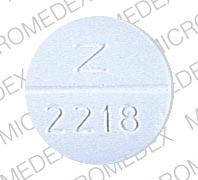Sulfisoxazole Dosage
Applies to the following strengths: 500 mg; 500 mg/5 mL
Usual Adult Dose for:
- Cystitis
- Inclusion Conjunctivitis
- Trachoma
- Malaria
- Nocardiosis
- Otitis Media
- Pelvic Inflammatory Disease
- Pyelonephritis
- Toxoplasmosis
- Meningitis - Meningococcal
- Meningitis - Haemophilus influenzae
- Chancroid
Usual Pediatric Dose for:
Additional dosage information:
Usual Adult Dose for Cystitis
1 to 2 g orally every 6 hours for 3 to 7 days
Usual Adult Dose for Inclusion Conjunctivitis
1 to 2 g orally every 6 hours for 21 days
Usual Adult Dose for Trachoma
1 to 2 g orally every 6 hours for 21 days
Usual Adult Dose for Malaria
2 g orally every 6 hours for 7 to 10 days; used only as adjunctive therapy in chloroquine-resistant Plasmodium falciparum
Usual Adult Dose for Nocardiosis
2 g orally every 4 to 6 hours for at least 6 months
Immunocompromised patients may require up to 1 year or longer of treatment.
Usual Adult Dose for Otitis Media
2 g orally every 6 hours for 10 to 14 days
Usual Adult Dose for Pelvic Inflammatory Disease
500 mg orally every 6 hours for 21 days
Use in combination with ceftriaxone.
Usual Adult Dose for Pyelonephritis
2 g orally every 6 hours for 14 days
Usual Adult Dose for Toxoplasmosis
2 g orally every 6 hours with pyrimethamine 75 mg one time followed by 25 mg orally once a day
Folinic acid 3 to 9 mg orally 2 to 3 times a week is recommended to prevent bone marrow toxicity. Therapy should be continued for 2 to 4 months.
Usual Adult Dose for Meningitis - Meningococcal
2 g orally every 6 hours
Therapy should be continued for approximately 14 days, depending on the nature and severity of the infection.
Usual Adult Dose for Meningitis - Haemophilus influenzae
2 g orally every 6 hours
Therapy should be continued for approximately 14 days, depending on the nature and severity of the infection.
Usual Adult Dose for Chancroid
2 g orally every 6 hours for approximately 7 days, depending on the nature and severity of the infection
The patient's sexual partner(s) should be evaluated. It is wise to also culture for gonococcus and to screen for syphilis.
Sulfisoxazole is not considered a drug of choice and is no longer recommended by the Centers for Disease Control and Prevention (CDC) to treat chancroid.
Usual Pediatric Dose for Bacterial Infection
2 months or older: 75 mg/kg orally for 1 dose, followed by 120 to 150 mg/kg/day in divided doses every 4 to 6 hours
Maximum dose: 6 g/day
Usual Pediatric Dose for Chlamydia Infection
2 months or older: 100 mg/kg/day orally in divided doses every 6 hours
Maximum dose: 2 g/day
Usual Pediatric Dose for Toxoplasmosis
Congenital: Initial loading dose: 1/2 of the 24 hour dose
Maintenance dose: 150 mg/kg/day or 4 g/m2/day orally in 4 to 6 divided doses; used in conjunction with pyrimethamine
Maximum dose: 6 g/day
Usual Pediatric Dose for Pelvic Inflammatory Disease
2 months or older: 100 mg/kg/day orally in divided doses every 6 hours; recommended to be used in combination with ceftriaxone
Renal Dose Adjustments
CrCl 10 to 50 mL/min: The usual dose should be administered every 8 to 12 hours
CrCl 9 mL/min or less: The usual dose should be administered every 12 to 24 hours
Liver Dose Adjustments
Because sulfisoxazole is partially metabolized by the liver, dose reductions are recommended in patients with liver disease.
Precautions
Fatalities associated with the administration of sulfonamides, although rare, have occurred due to severe reactions including Stevens-Johnson syndrome, toxic epidermal necrolysis, fulminant hepatic necrosis, agranulocytosis, aplastic anemia, and other blood dyscrasias. Sulfonamides should be discontinued at the first appearance of skin rash or any sign of adverse reaction. The development of a rash, fever, sore throat, arthralgia, pallor, purpura, or jaundice may be an early sign of a serious reaction.
Clostridium difficile associated diarrhea (CDAD) has been reported with almost all antibiotics and may potentially be life-threatening. Therefore, it is important to consider this diagnosis in patients who present with diarrhea following sulfisoxazole therapy. Mild cases generally improve with discontinuation of the drug, while severe cases may require supportive therapy and treatment with an antimicrobial agent effective against C difficile. Hypertoxin producing strains of C difficile cause increased morbidity and mortality; these infections can be resistant to antimicrobial treatment and may necessitate colectomy.
Sulfonamides should be given with caution to patients with impaired renal or hepatic function.
Patients should be advised to maintain adequate fluid intake to prevent crystalluria and stone formation.
Frequent monitoring of complete blood counts is recommended. Sulfisoxazole should be discontinued if a decrease of any formed blood element is observed.
Urinalysis and renal function tests are also recommended, especially in patients with renal impairment.
Systemic sulfonamides are contraindicated in infants less than 2 months of age (except in the treatment of congenital toxoplasmosis as adjunctive therapy with pyrimethamine), pregnant women at term, and mothers nursing infants less than 2 months of age.
Dialysis
Peritoneal dialysis is not effective and hemodialysis is only moderately effective in eliminating sulfonamides.
More about sulfisoxazole
- Check interactions
- Compare alternatives
- Drug images
- Side effects
- During pregnancy
- Drug class: sulfonamides
- Breastfeeding
Patient resources
Other brands
Gantrisin Pediatric, Truxazole
Professional resources
Other brands
Related treatment guides
Further information
Always consult your healthcare provider to ensure the information displayed on this page applies to your personal circumstances.


